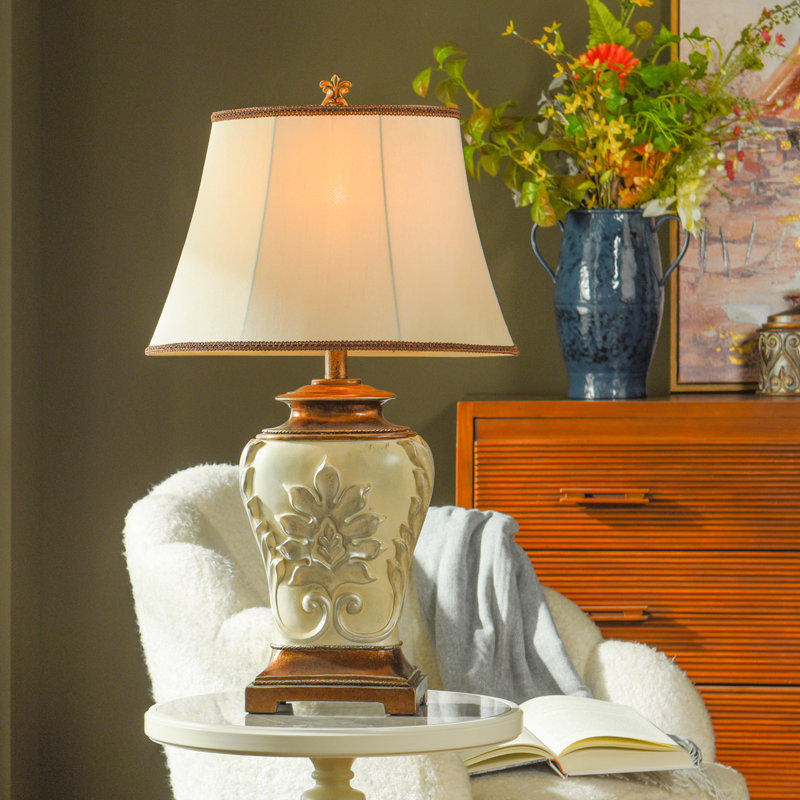Contents
- 1 The History of Antique Table Lamps
- 2 Identifying Authentic Antique Table Lamps
- 3 The Most Popular Types of Antique Table Lamps
- 4 How to Value Antique Table Lamps
- 5 Integrating Antique Table Lamps into Modern Decor
- 6 Caring for Your Antique Table Lamps
- 7 Where to Find Antique Table Lamps
- 8 Frequently Asked Questions About Antique Table Lamps
The History of Antique Table Lamps
Understanding the history of antique table lamps is essential for collectors and enthusiasts. These lamps are more than just sources of light. They are pieces of historical art. Their journey through time tells the story of design, innovation, and taste.

The Evolution from Candle to Electric
Antique table lamps began as simple candle holders. They evolved into oil burners before moving to gas and finally electricity. This shift in technology marked the evolution of lamp design as well. Early electric lamps often mimicked the styles of their predecessors but soon took on new forms.
As electricity became widespread, the need for portable light sources grew. Manufacturers mas improved table lamps to meet this demand. These changes made it possible for families to enjoy improved lighting at home without the dangers of open flames.
Notable Periods and Styles in Antique Lamp Design
Each era left its mark on table lamp design.
- The Victorian era featured ornate lamps with heavy decoration.
- The Art Nouveau period brought in flowing, natural lines inspired by the natural world.
- The Art Deco era introduced geometric shapes and bold lines.
Other influential styles include Gothic Revival, with its medieval elements, and the Tiffany lamps, celebrated for their stained glass shades. Each style reflects the culture and technology of its time.
Antique table lamps from these periods are not just utilitarian items, but reflections of history and art. Recognizing the various styles and periods can add depth to any collection or home decor.
Identifying Authentic Antique Table Lamps
When venturing into the realm of antique table lamps, knowing what to look for is key. Identifying authentic ones can enhance a collection’s value and ensure you’re getting the real deal.
Materials and Manufacturing Techniques
Authentic antique table lamps often boast unique materials not commonly used today. Look for heavy metals like brass, bronze, or iron. Quality glasswork, such as blown or stained glass, may also be present. The manufacturing techniques of old were intricate. Hand-painted details, hand-forged metalwork, and soldered joints are signs of an authentic antique. Additionally, irregularities in glass or metalwork can indicate handmade processes of the past.
Marks and Signatures of Renowned Makers
True antiques often carry the mark or signature of their maker. Check the lamp’s base, the inside of the shade, and near the light socket. Renowned makers left these marks as a signature of their work. A signature or stamp can vastly increase a lamp’s value and authenticity. Some famous names to look out for include Tiffany, Handel, and Pairpoint. Be wary of reproductions that may mimic these marks but lack the age and quality of a true antique.

The Most Popular Types of Antique Table Lamps
Antique table lamps come in various styles that rose to fame during different periods. Collectors often seek specific types, known for their design and historical significance.
Oil Lamps and Their Transition to Kerosene
Oil lamps hold a special place among antique table lamps. They served as a primary light source before electricity. Crafted from brass or pewter, they featured a reservoir to hold oil and a wick. As innovation advanced, these lamps adapted to burn kerosene. It was a cleaner and brighter burning fuel. This transition also led to a variety of lamp designs, some with intricate glasswork and others with detailed metal frames.
The Rise of Art Nouveau and Tiffany Lamps
The Art Nouveau movement birthed a fresh style of table lamps that integrated forms from nature. These lamps often displayed flowing lines and shapes inspired by plants and flowers. Then came the iconic Tiffany lamps, renowned for their colorful stained glass shades. These lamps stand out with their handmade glass pieces soldered together into breathtaking designs. They are highly coveted by collectors for their artistic beauty and craftsmanship. Tiffany lamps are often viewed as the pinnacle of antique table lamps. They reflect the merging of art and functionality during the early 20th century.
How to Value Antique Table Lamps
Appraising antique table lamps requires understanding various factors that affect their worth. When evaluating these historical pieces, assessing their value goes beyond mere aesthetics.
Factors Influencing the Value of Antique Lamps
Several key elements impact the value of antique table lamps, making some more valuable than others. Here are crucial factors to consider:
- Age and Authenticity: Older lamps that can be verified as authentic command higher prices.
- Condition: Lamps in pristine condition are more desirable. Any damage can significantly decrease the value.
- Rarity: The scarcer the lamp, especially from certain periods, the more valuable it can be.
- Maker’s Mark: A lamp with a signature from a renowned maker like Tiffany can be greatly valuable.
- Provenance: Lamps with a well-documented history or previous ownership can increase in value.
- Aesthetic Appeal: A lamp’s design and artistic beauty appeal to collectors, enhancing its value.

Tips for Appraising and Pricing
To accurately appraise and price antique table lamps, follow these guidelines:
- Consult Experts: Seek advice from professionals familiar with antique table lamps.
- Use Reference Books: Guides and directories listing known lamp makers and their marks are invaluable.
- Condition Assessment: Closely examine for any repairs, replaced parts, or damage.
- Compare with Auction Prices: Check recent auction results for similar lamps to gauge the market value.
- Authenticity Verification: Invest in expert authentication to ensure the lamp is genuine.
By considering these tips and factors, collectors and owners can establish a fair value for their antique table lamps, ensuring an accurate representation of their historical and financial worth.
Integrating Antique Table Lamps into Modern Decor
Antique table lamps blend history with elegance. When placed in modern settings, they offer a unique contrast that enhances any room. The key is to mix eras with intent. Here is how you can achieve that balance.
Matching Lamps with Contemporary Furniture
Choosing the right lamp for your modern furniture is essential. Look for elements that will connect the lamp to the room’s overall theme. Consider the color scheme; for example, a brass antique table lamp pairs well with warm tones and can anchor a space with its weighty presence. Similarly, the intricate glasswork of a Tiffany lamp could complement modern decor with similar color accents. The size of the lamp should also be appropriate. It should not overpower the furniture but serve as a focal point to draw the eye.
Geometry plays a part too. If your contemporary furniture boasts straight, clean lines, opt for an Art Deco-style lamp to echo that design. An organic-shaped Art Nouveau lamp can soften a minimalist modern design with its curves and natural motifs. The trick is to look for harmony between the antique table lamp and your furniture that unites different eras in a cohesive way.
Lighting Effects and Ambiance with Antique Lamps
Antique table lamps are not just decorative; they provide an ambient glow that can alter the mood of a space. Warm light from an antique lamp can make a room feel inviting and cozy. Position lamps in areas where they can either accent an art piece or cast a soft light for reading. The stained glass shades of Tiffany lamps play with light uniquely, projecting colorful patterns onto the walls, making for a mesmerizing effect in the evenings.
Consider using a dimmer with your antique lamps for adjustable lighting levels that suit different times of the day and different activities. It’s also important to make sure the lamps are placed strategically to balance the room’s light sources. This will ensure each area of the room is lit appealingly while highlighting the beauty of the antique pieces. Through thoughtful placement and consideration of lighting effects, antique table lamps can significantly enhance the ambiance of a modern home.
Caring for Your Antique Table Lamps
Proper care is vital to maintain the beauty and function of antique table lamps. Knowledge of maintenance and handling can prevent damage and ensure their longevity.
Routine Maintenance and Cleaning
To keep your antique table lamps in top condition, follow these simple steps:
- Dust Regularly: Use a soft cloth to gently remove dust from the lamp’s base and shade.
- Clean Metal Parts: Apply a mild metal cleaner on a cloth for brass or bronze parts. Avoid harsh chemicals.
- Handle Glass with Care: For stained glass or blown glass, use a damp cloth. Dry immediately to prevent marks.
- Avoid Water Exposure: Keep the electric parts of lamps dry. Clean around these areas with a dry cloth.
Always handle your antique table lamps with soft hands and care, keeping their age and delicacy in mind.
Addressing Wiring and Safety Concerns
Antique table lamps may have outdated wiring that poses risks. Here’s how to manage these concerns safely:
- Inspect Wiring: Look for frayed cords or loose connections. If unsure, seek professional help.
- Update Components: Replace old or worn parts like wires or sockets, with the guidance of an expert.
- Professional Repairs: To retain value, have any electrical work done by specialists in antique lamps.
Staying vigilant about wiring and safety not only protects your lamps but ensures they can be enjoyed safely in a modern home. By following these care tips and addressing wiring concerns, your antique table lamps will remain treasured items for years to come.
Where to Find Antique Table Lamps
Finding the right antique table lamps can be a thrilling hunt for collectors and enthusiasts. These lamps not only illuminate your space but also serve as a link to the past, providing character and timelessness to your decor. But where do you begin your search for these historic treasures?
Shopping Tips for Collectors and Enthusiasts
When on the lookout for antique table lamps, consider these actionable tips:
- Research is Key: Understand the eras and styles of lamps you are interested in.
- Visit Antique Shops: Local antique stores often carry a range of lamps. It’s a chance to see them up close.
- Check Estate Sales: Estate sales can be gold mines for antique finds at reasonable prices.
- Look at Flea Markets: You might find hidden gems among other second-hand items.
- Be Patient: Finding the perfect piece can take time, don’t rush into a purchase.
It’s crucial to inspect the lamp thoroughly. Look for signs of authenticity, such as maker’s marks or consistent aging. Always ask the seller questions regarding the lamp’s history and condition. Being informed will help you make the best choice.
Online Resources and Auctions
In today’s digital age, online platforms are invaluable for finding antique table lamps. Here’s what to keep in mind:
- Utilize Auction Sites: Websites like eBay can offer a wide selection, but be sure to check seller reviews.
- Online Antique Stores: Many dealers have moved online, providing detailed descriptions and high-quality photos.
- Social Media Marketplaces: Platforms like Facebook Marketplace can be surprising sources for antiques.
- Online Auction Houses: For high-end lamps, online auction houses can provide verified and appraised items.
Always verify the reliability of the website or seller. Use secure payment methods and inquire about return policies when dealing with online purchases. With these tips and resources, you’re equipped to find the antique table lamps that will add a timeless charm to your home.
Frequently Asked Questions About Antique Table Lamps
Antique table lamps can raise many questions among collectors and enthusiasts. Let’s clear some doubts.
Common Concerns and Misconceptions
Firstly, people often wonder if any old lamp is an antique. Not all old lamps qualify. A true antique table lamp must be at least 100 years old. Another common misconception is that a lamp must look aged to be valuable. In fact, lamps in excellent condition are often more desirable. Also, not all Tiffany-style lamps are made by Tiffany; many are just inspired by the design.
Think about the lamp’s plug and wiring. Sometimes, these parts are modern replacements, which does not necessarily mean the lamp isn’t authentic. Additionally, some believe that a heavier lamp indicates it is antique, which isn’t always true.
Expert Advice for Collectors
If you’re serious about collecting antique table lamps, get knowledgeable. Learn about the eras and styles that interest you. Here’s some expert advice: always verify the authenticity of a lamp before purchasing and keep an eye out for the maker’s marks, which can be found on various parts of the lamp. Investing in a good reference book or consulting with professionals can make a huge difference in your collection.
For value preservation, maintain your lamps properly. Use the right cleaning techniques for different materials. If you need to rewire an old lamp, consider hiring a professional who specializes in antiques. This ensures the lamp maintains its value and operates safely.
By knowing the basics and consulting with experts, collectors can deepen their appreciation and care for antique table lamps.


